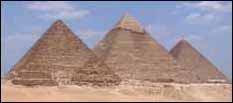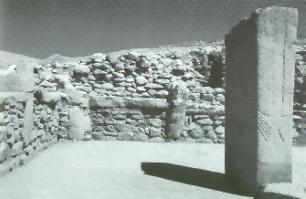![]()
![]()
GODS OF EDEN
|
 |
- What do we really know of the virtually alien technology used by this forgotten race, which included the power to raise stone blocks into the air and penetrate granite 500 times faster than modern-day drills?
- How did the Pharaoh Akhenaten's obsession with the Elder gods change the face of Egyptian history and catalyse the events remembered in the Bible as the Exodus of Moses?
- How did the survivors of Egypt's Elder culture cause the genesis of civilisation? Using up-to-date scholarly knowledge of Egypt's most ancient history, Gods of Eden answers these compelling questions and many more, bringing alive the strange world of the Elder gods.
|
Giza plateau |
With the new millennium fast approaching, the race is now on to find and open the lost Hall of Records - a monumental event that will eclipse Carter's discovery of Tutankhamun's tomb. Join that race and discover the Elder god's ultimate legacy to mankind. |
GODS OF EDEN includes brand new evidence for sonic technology having been used by the Egyptian pyramid builders. One ancient text written by tenth-century Arab historian al-Masudi speaks of the stone blocks being used to construct the Great Pyramid as being moved in a most extraordinary fashion. First magical papyri were placed beneath the newly-quarried stones. Each block would then be hit with a rod or pole enabling it to rise into the air and move steadily forwards. They would pass through an avenue of metal poles inserted in a previously-laid stone pavement for a distance of 'one bowshot', about 50 metres, before settling back down again. The process would then be repeated until the stone reached its point of destination. Although simply a legend, there are traditions from all around the world that speak of the movement of stone blocks and the construction of walls and buildings by sonic levitation. The sound of trumpets were supposedly used at Tiahuanacu to move stones from local quarries to the site of the city.A race of dwarfs at Uxmal in the Yucatan peninsular were able to simply whistle and stones and logs would rise into place.
The walls of Thebes in the Greek kingdom of Boeotia were said to have been constructed to the sound of Amphion's lyre, while Phoenician myth speaks of the god Ouranus moving stones as if they had life of their own. Traditions from Tibet also speak of walls being built by sound, while there are two accounts of European travellers supposedly witnessing sonic levitation whilst staying in remote monasteries during the early years of this century.
During the nineteenth century Egyptologist William Flinders Petrie marvelled at the ability of the pyramid builders to pierce holes in hard rocks, such as granite, diorite and quartz, using tubular drills. He also found evidence for the use of lathes and nine-feet long jewel-tipped saws. All imply the presence in ancient Egypt of mechanical devices and an advanced technology quite alien to the ancient world.
Recently, granite cores dated to Egypt's Pyramid age and examined by American technologist Christopher Dunn have revealed clear signs of being drilled using a form of ultrasonics - the same technique that powers pneumatic drills today. According to his calculations, the drills employed must have penetrated the granite 500 times faster than modern diamond-tipped drills. All this is interesting, for there is also evidence that ultrasonic devices were used to disintegrate rock in Tibetan monasteries, while in the nineteenth century a maverick American scientist named John Ernest Worrell Keely developed sympathetic vibratory apparatus that could raise heavy objects into the air and disintegrate granite. Like the stone cores from Egypt, Keely found that ultrasonics could penetrate quartz much faster than other types of mineral because it so closely matched the ultrasonic frequency range used in this process. This knowledge of ultrasonic drilling in ancient Egypt is a startling revelation, and is yet further evidence that the Pyramid builders were in possession of an advanced technology that came out of nowhere.
|
Monolith and cult building unearthed at Nevali Cori in Turkey dated to c. 8000 BC.
|
Andrew also shows that as early as 7000 BC neolithic artisans in the Near East were able to drill deep holes in agate beads over 5 centimetres in length. Necklaces and beads have been found at various sites in south and south-east Turkey that clearly display this remarkable quality. Today we need a diamond-tipped, tungsten carbide drill to do the same job. Yet we are led to believe that at a time when early man was just settling into an agricultural lifestyle, he/she had this extraordinary capability. |
![]()
![]()

